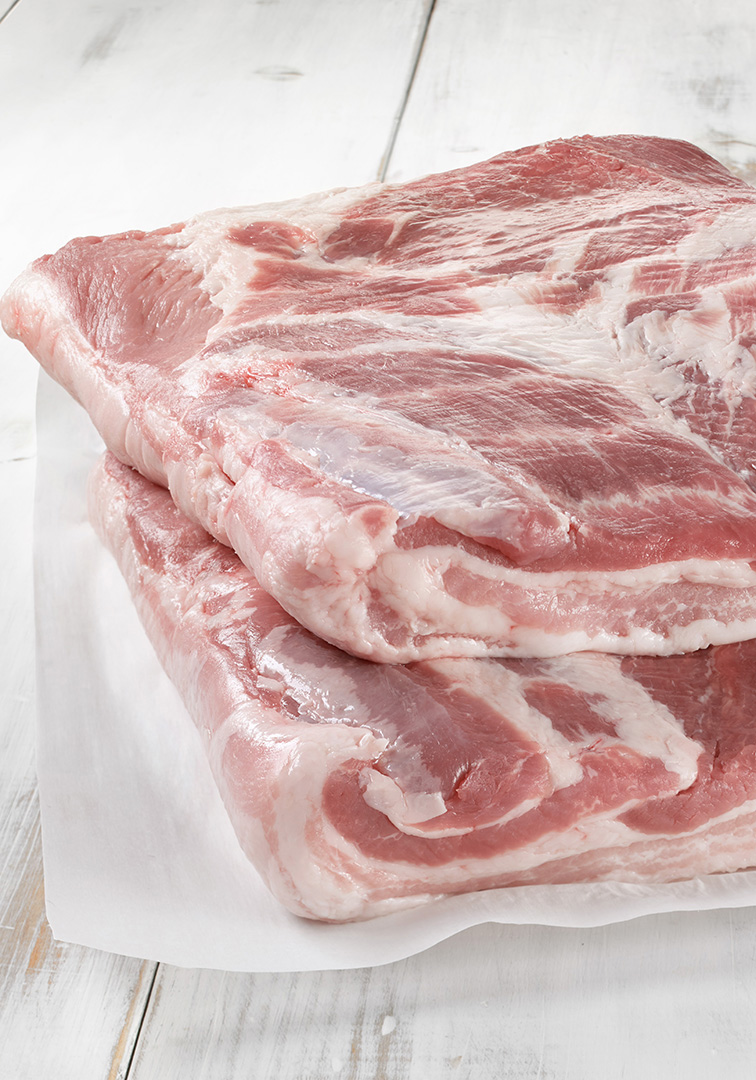Pork belly

Pork belly is an iconic, versatile cut with unparalleled richness and tenderness. Let’s take a closer look at this culinary gem and explore the best ways to prepare it.
Key features
Pork belly comes from the belly of the hog, just below the ribs. It consists of alternating layers of meat and fat, making it especially juicy and tasty when properly prepared.
- The melting fat coats the meat, giving it a rich, gourmet flavour that’s ideal for a variety of marinades and spices.
- With its layers of intramuscular fat, pork belly’s melt‑in‑your-mouth texture is ideally suited to slow cooking.
- This cut can be cooked in several ways, each revealing different facets of its flavour and texture.
Cooking techniques
- This method involves slowly cooking the pork belly in an aromatic liquid at low temperature. The result is meat that falls apart with a fork and is just right for comforting dishes.
- Low-temperature smoking for several hours creates deep, smoky flavours and keeps the texture tender and juicy.
- This technique involves sealing meat in an airtight bag and cooking it at a low temperature for several hours, guaranteeing exceptionally tender, flavourful meat.
- Ideal for creating a crispy crust with juicy meat inside. Perfect with fresh herbs and spices.
- For a faster method, grilling at a high temperature caramelizes the fat for a crispy crust with a juicy interior.
:quality(65))
:quality(65))
:quality(65))
:quality(65))
:format(webp):quality(65))
:quality(65))
:quality(65))
:quality(65))
:quality(65))
:quality(65))
:quality(65))
:quality(65))
:quality(65))